Cymbidium is a fairly popular type of orchid. To date, from 70 to 100 hybrids of this orchid flower have been bred, of which more than 60 are applicable for home floriculture. The birthplace of a beautiful plant is Australia, which can be found in the mountainous regions of Indochina. He likes the subtropical climate, also found in some regions of Asia, India and Japan. The epiphyte itself was discovered by Swedish scientists in the 19th century.
Content
Features of the variety and types of plants
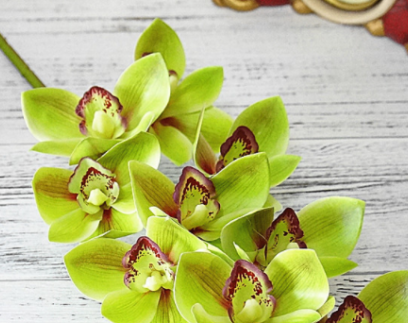
Any archdiocese, describing the variety, the first thing to note is the long flowering and wonderful aroma. The smell is a distinctive feature of this flower: strong, fragrant, but at the same time incredibly pleasant. Flowering can last from 1.5 to 3 months.
He does not have a bulb, like many representatives of this family, but there is a pseudobulb. They are oval, green in color and are next to each other. The pseudobulb itself is located at the root of the plant, it is it that nourishes the plant with moisture. The leaves, like the cups, have a long shape: rounded, elongated from one end, or pointed.
The most common colors:
- cream;
- yellow;
- pink;
- brown;
- green;
- red.
Kinds:
- Dwarf Cymbidium is distinguished by small pseudobulbs, usually egg-shaped. Their length is 2-3 cm. It has thin, spiky leaves and vertically arranged peduncles. It attracts attention with a red-brown color with yellow edges, blooms mainly in the winter season.
- Ivory is characterized by a yellowish-white color of the flowers and yellow spots on the lips. Eburneum, as this type of orchid is also called, smells good and likes a temperate climate. The flowers are large, with a diameter of up to 7.5 cm. It begins flowering in the spring.
- Tsibmidium Tracy - has bright yellow flowers with reddish-brown stripes. The brush itself can grow up to a meter in length, so this type is often used in flower shops. The lip most often has a wavy shape.
- Cymbidium hybrid - has many subspecies.
- Aloeelistic cymbidium is not very tall, blooms from spring to autumn. It has hard leaves and flowers with a brownish tint, with a diameter of 4-5 cm.
- Amp Cymbidium - a mix of Asian countries that has long been loved by gardeners. He is planted on the windowsills.
- Lanceolate cymbidium usually grows up to 50 cm long. The flowers are not very large, the peduncle is 30-40 cm long. The hue of the flowers is green, light green, and the color of the lips is white.
- It has greenish large flowers and yellow petals. Blooms in winter, has long leaves. Usually grows to a meter, but there are specimens of a size and a little over a meter.
- Daya. Peduncle of this species is usually lowered down. The flowers themselves are small, have a pale cream shade and a burgundy, or pale yellow lip.
- Cascade cymbidium - has special peduncles in structure.
- Cymbidium mini up to 60 cm high. It has unique colors of flowers.
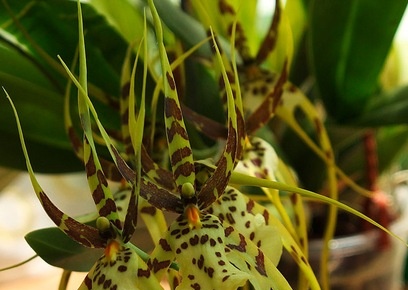 You may be interested in:
You may be interested in:Orchids Cymbidium: home care
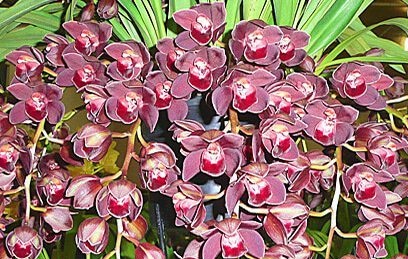
Cymbidium flower is not the most finicky orchid plant, but, like all varieties, requires some care. Lighting is a fundamental factor in care.The Cymbidium orchid variety plant loves sunlight. Therefore, the flower should stand in the brightest place, with access to light. It is advisable to regularly ventilate the room. It should be borne in mind that hybrids cannot be in the scorching sun for too long. In winter, it is recommended to use special lamps. When ventilating the room, you need to monitor the absence of drafts, the flower is sensitive to them. With insufficient lighting, the leaves of the plant fall.
Humidity is another important factor. It is impossible to harm the plant with increased humidity, since Cymbidiums naturally grow in such a climate. At home, you need to maintain humidity at a level of 40-50%.
It is also important to properly water the Cymbidium and make sure that the soil is slightly moist. In case of lack of water, the pseudobulbs shrink, and this is absolutely not allowed. Water the Cymbidium orchid with water at room temperature, plentifully, while the water should not be hard.
The temperature of the contents is also extremely important. To maintain Cymbidium, a cool room with temperature fluctuations is required. The temperature is 16-20 degrees, but at night should be lower than during the day. Often owners transfer Cymbidium to the street in the summer season. It is due to temperature changes that the plant blooms. At the same time, the dwarf hybrid perceives normal room temperature well.
Soil for Cymbidium is better to choose in a special store, be sure to use a variety for orchids. Fertilizing with mineral fertilizers is done every 2 weeks regularly. But it is advisable to use half the concentration of that used to fertilize plants of the orchid family. Before dressing, pre-water the flower. When Cymbidium bloomed, top dressing should be temporarily stopped. In case of bush disease, fertilizing the plant is also prohibited.
After flowering, the peduncle needs to be cut. A sanitized knife or a special garden tool is used for this. You can make Cymbidium blossom by observing all these requirements. In order for a flower to appear from the arrow, you need to create a temperature difference, make sure that the plant receives sunlight, spray the flower. When the plant reaches 10-15 cm. Start using fertilizers. If, however, Cymbidium does not bloom, then there are errors in care. When the growth of the peduncle reaches 15-20 cm. For it you need to make a support.
Propagation at home
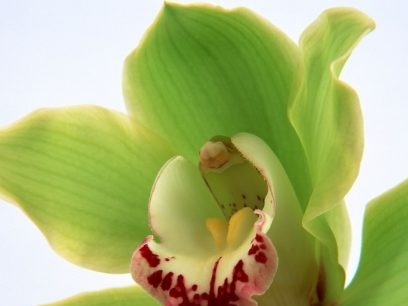
The most common way is by dividing the bush. To do this, get the flower from the pot, peel the roots and divide the orchid into several parts. In each part there should be several green and one brown bulb. If there are roots that look rotten or dry, they must be removed and dried. Torn during separation, treat with activated carbon.
Division by processes - part of the divided rhizome should contain about 3 pseudobulbs and a couple of shoots. Seed processes in different pots and moisturize regularly. Soon the plant will give new shoots.
Children - the transplanted Cymbidium at home needs to be transferred to a warmer place (after the period of rest has passed). It is also important to spray the leaves, and properly fertilize the orchid.
You can even propagate an old bulb without leaves.It must be laid out on wet moss, make a greenhouse. Regularly maintain humidity, ventilate bulbs. After the appearance of the sprouts, transplant the Cymbidium orchid into a pot. Next, you just need to take care of the plant. A flower propagated in this way will bloom in 4 years.
It is impossible to grow Cymbidium from seeds at home. When making a purchase, you do not need to purchase seeds, since the sowing of seeds is carried out only in laboratory conditions.
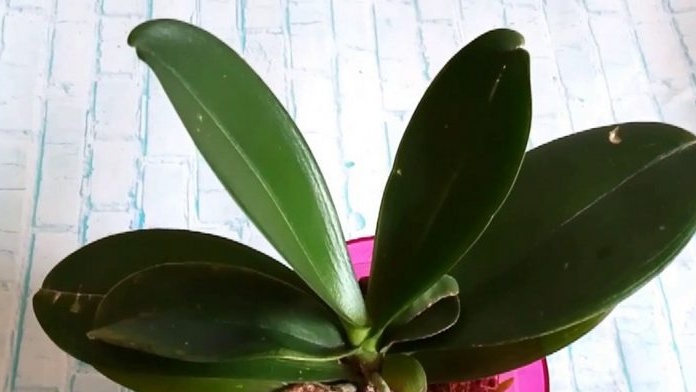 You may be interested in:
You may be interested in:Cymbidium transplant and growing problems
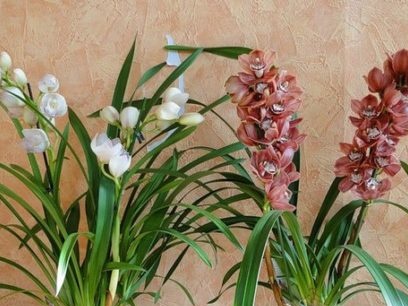
For a plant such as Cymbidium, a transplant should be done every 2 years. Since this type of flower plant is unfavorable to a change of place, there must be a reason for it. Most often it is soil caking or a pot that has become small. If the base of the root system is rotten, the system itself is damaged, or the plant is attacked by pests, a transplant is also recommended. You need to get the orchid carefully, without sudden movements, since the flower is very delicate.
Remove old pseudobulbs, clean the plant from unnecessary dead roots, after which it should be planted exactly in the center. The plant should not be planted too deep, otherwise the pseudobulbs will soon be rotten. After transplanting, put the plant in partial shade, it is forbidden to water it for the next few days. However, in hot weather, you need to monitor humidity, moisten and spray the flower.
What problems are encountered when growing Cymbidiums:
- The leaves turn black. As a rule, black spots appear at the base of the leaves. Most likely the plant is too flooded with water, since these spots form from overflow. You need to properly water the plant and keep in mind that the root in this case can also be rotten.
- The leaves turn yellow. Yellowed leaves are formed as a result of a lack of moisture, or in the presence of pests. It is necessary to monitor the watering, if necessary, spray the plant and check if there are signs of pests.
- Flowers or buds fall. This happens if the flowering plant is sprayed in a cool room. As in previous cases, you need to monitor watering, as well as temporarily cancel top dressing.
- Pseudobulbs are wrinkled. This suggests that care is impaired. This is usually irregular watering. The time between sessions needs to be reduced, but the watering itself should be regular. We draw attention to the fact that old pseudobulbs must be wrinkled in nature.
- Root rot. Usually, a problem with rotten roots is preceded by errors when transplanting into an oversized pot. To eliminate, you need to create drainage for the roots. Watering should be regular, while water should not stagnate in the pan.
Root decay - a disease is observed if Cymbidium is in a cool room for a long time. Also, non-compliance with irrigation rules contributes to the emergence. The disease begins with leaves, passes to the root system and ends with the death of the latter.
Gray rot - affects leaves, soil surface and petals if the plant blooms. It arises as a result of the plant being in a cold room with high humidity.
Anthracnose - yellow or black spots on the leaves. It has a viral character, which is why it is also known as a viral mosaic. Orchid growth worsens and is not treated. It is necessary to observe plant hygiene and make sure that the orchid does not infect its "neighbors".
Fusarium - the leaf becomes soft, curls and becomes covered with a coating. Edematous leaves - will occur if after watering the flower is at a low temperature. First, a watery shell forms, gradually turning rot.
Pests you can easily recognize:
- Spider mite. Incredibly loves orchids, occurs when the air is dry. The presence of a white spider web on leaves and stems indicates the presence of this arthropod.
- Scaffold and thrips - eats Cymbidium juice, occurs as a result of low humidity and elevated temperature in the room. It resembles brown growths on peduncle leaves.
- Aphids - their feature - the ability to occupy the back of the leaves. As a result, a weakened plant is susceptible to viruses.
- Mealybug - formed on leaves, have a light yellow, very rare, almost orange color. Spots similar to cotton wool form on top.
The places that remained trimmed should be treated with activated carbon, and the orchid should be sent to rest for 2-3 days. After spraying with leaf fertilizer, and the slices themselves with a few drops of succinic acid. The plant itself is placed in moist moss in a warm place. The result may be noticeable after a few months. Many gardeners also perform resuscitation of Cymbidium without roots, they are being increased. In a closed space, place the flower so that the root system is on top, and the leaves below and create something in the form of a greenhouse. 2 times a week you need to spray the roots. As soon as it turns out to grow the roots, the plant is transplanted.
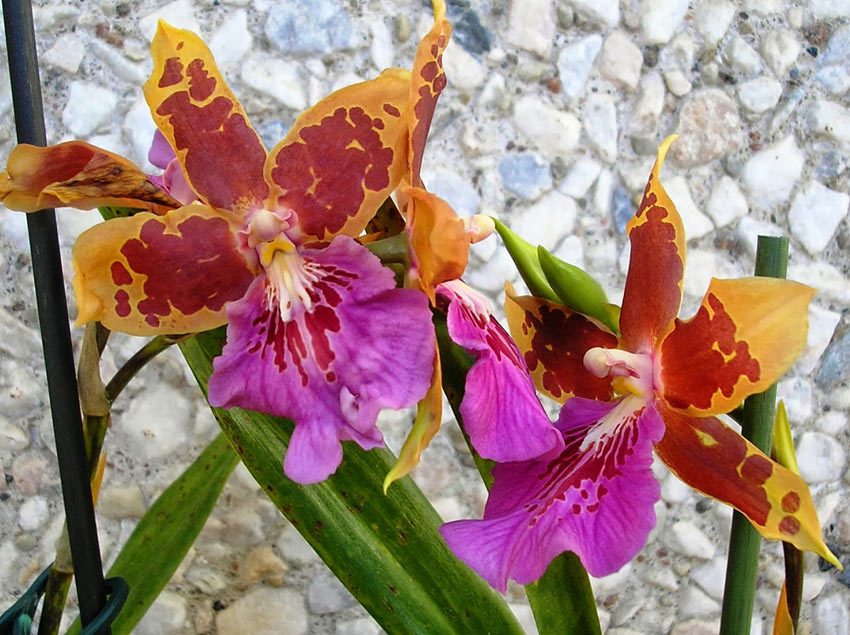 You may be interested in:
You may be interested in:Whatever types of hybrids people admire, anyone can grow up, it would be a desire. With good care, any flower will please lush flowering.

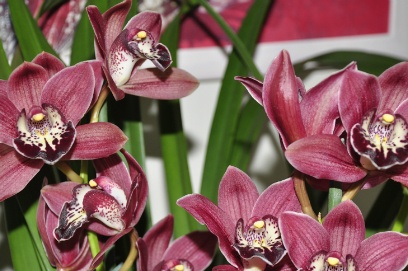
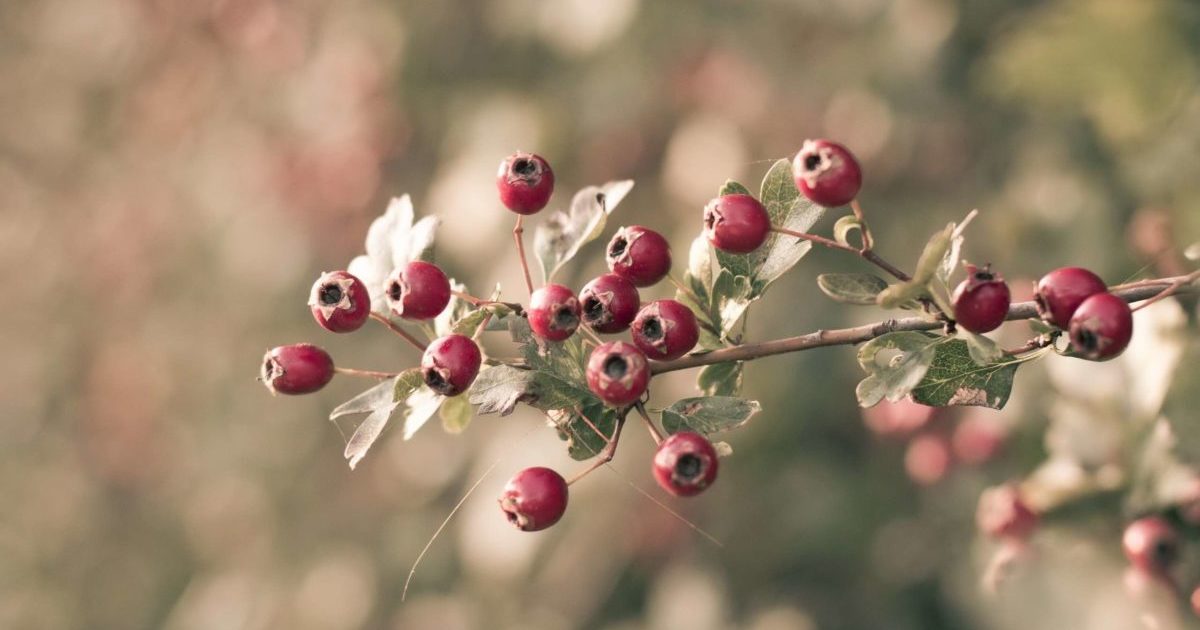
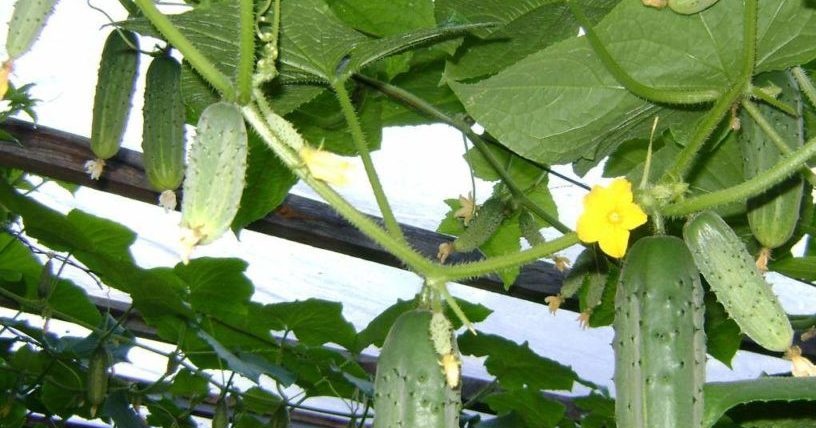
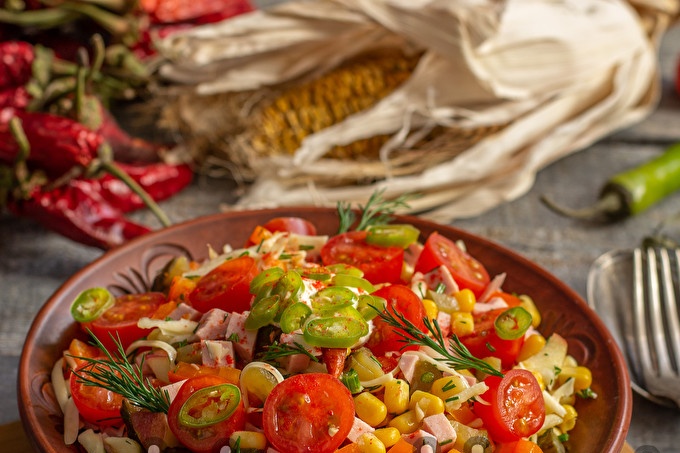 Mexico salad - no need to cook
Mexico salad - no need to cook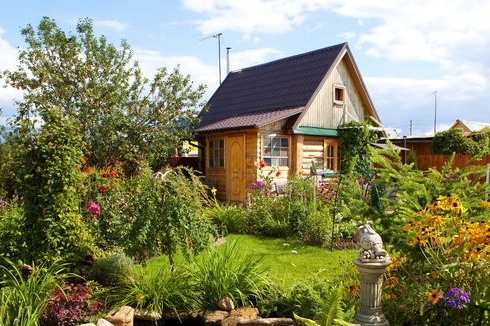 Garden tax for summer residents from 2019 in Russia
Garden tax for summer residents from 2019 in Russia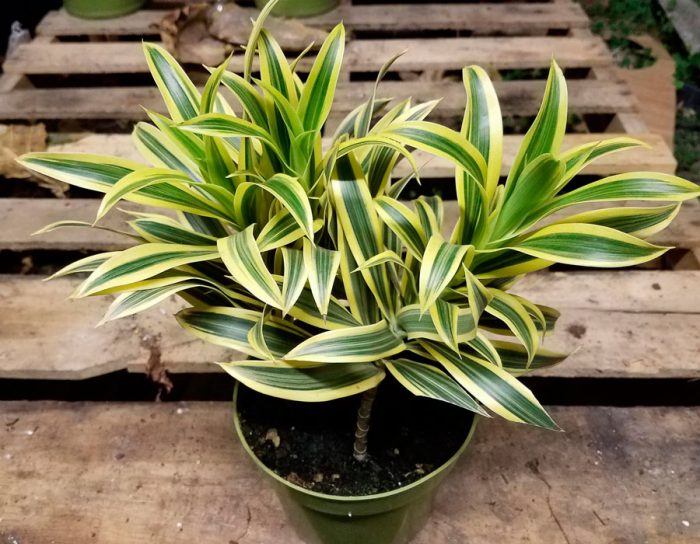 Dracaena: home care, transplantation and reproduction, photo
Dracaena: home care, transplantation and reproduction, photo Beetroot salad with prunes, walnuts and hard cheese
Beetroot salad with prunes, walnuts and hard cheese